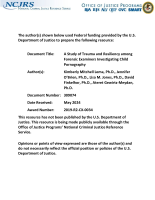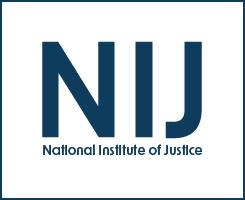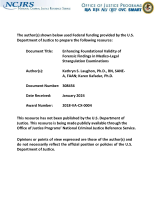Forensic examiners
Medetomidine Rapidly Proliferating Across USA — Implicated In Recreational Opioid Drug Supply & Causing Overdose Outbreaks
FITS—Functional Implementation of Thorough and Systematic Approaches for Fracture Examinations
Non-Destructive Identification of Dyes on Fabric Using Near-Infrared Raman Spectroscopy
Sexual Assault Response Team Goals and Motivations for Development
A Framework for Covariate-specific ROC Curve Estimation, with Application to Biometric Recognition
FBI Laboratory Decision Analysis Studies in Pattern Evidence Examinations
Enhancing Foundational Validity of Forensic Findings in Medico-Legal Strangulation Examinations
DNA 101
Technological Solutions for Rural Medical Examiner Facilities
Face Recognition Accuracy of Forensic Examiners, Superrecognizers, and Face Recognition Algorithms
OsteoID: A New Forensic Tool to Help Identify the Species of Skeletal Remains
Accuracy, reproducibility, and repeatability of forensic footwear examiner decisions
Analysis of Automotive Paint Smears Using Attenuated Total Reflection Infrared Microscopy
Transmission Infrared Imaging Microscopy and Multivariate Curve Resolution Applied to the Forensic Examination of Automotive Paints
Accuracy, Efficacy, and Reproducibility of Muzzle-to-Target Distance Determination using Gunshot Residue
FIU - Forensic Technology Center of Excellence
N,N-Dimethylpentylone (NPS Stimulant)
N-Pyrrolidino Etonitazene (NPS Opioid)
Metonitazene (NPS Opioid)
Bromazolam Prevalence Surging Across the United States Driven In Part by Increasing Detections Alongside Fentanyl
Can Science Enhance Equity? Findings and Implications From a Study To Detect Bruising on Victims with Dark Skin Pigmentation
This plenary panel from the 2023 NIJ Research Conference features fascinating research on a methodology to improve the detection and documentation of bruises on victims of violence who have dark skin pigmentation. This study highlights the intersection between science, justice, and racial equity, featuring practitioner and victims’ advocacy perspectives. The discussion describes the research and its findings and explore strategies to ensure that this particular evidence-based methodology can be widely implemented by nurse practitioners in the field.
Participants:
See the YouTube Terms of Service and Google Privacy Policy




